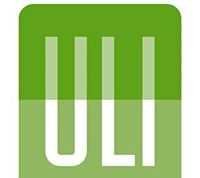Enhancing Construction Efficiency: Strategies and Best Practices
The construction industry, pivotal to economic growth, faces significant challenges, including the need for enhanced efficiency to complete projects on time, within budget, and with high quality. This article delves into strategies and best practices to improve construction efficiency by addressing common issues such as poor planning, inadequate communication, and inefficient processes. Key strategies include adopting Building Information Modeling (BIM), lean construction, and modular construction. The principles of efficient construction emphasize clear project goals, effective communication,
The construction industry plays a crucial role in the growth of any economy. However, it is also one of the most challenging industries, as it involves multiple stakeholders, complex processes, and significant risks. One of the most significant challenges faced by the construction industry is enhancing efficiency. The need to complete projects on time, within budget, and with high quality has become increasingly important. This article explores how the construction industry can enhance efficiency and improve project outcomes.
To enhance construction efficiency, it is essential to identify the factors that contribute to delays, cost overruns, and quality issues. These factors can include poor planning, inadequate communication, lack of collaboration, and inefficient processes. By addressing these factors, the construction industry can improve productivity, reduce waste, and enhance project outcomes. This article will examine various strategies and technologies that can be used to enhance construction efficiency, including building information modelling (BIM), lean construction, and modular construction.
Fundamentals of Construction Efficiency
Principles of Efficient Construction
Efficient construction is the process of completing a construction project on time, within budget, and to the desired quality standards. To achieve this, there are some fundamental principles that must be followed.
Firstly, the construction team must have a clear understanding of the project requirements and goals. This involves defining the scope of work, identifying the resources required, and establishing a timeline for completion.
Secondly, effective communication is essential for efficient construction. All team members must be aware of their roles and responsibilities and be able to communicate effectively with each other. This ensures that any issues or challenges are addressed in a timely manner, minimizing delays and cost overruns.
Thirdly, a culture of continuous improvement must be fostered within the construction team. This involves regularly reviewing performance and identifying areas for improvement. By continuously learning and adapting, the team can become more efficient over time.
Importance of Planning and Scheduling
Planning and scheduling are critical components of efficient construction. A well-planned project ensures that resources are allocated effectively, and work is completed in a logical and efficient sequence. This minimizes delays and ensures that the project is completed on time.
Scheduling involves breaking down the project into smaller tasks and establishing a timeline for completion. This allows the team to monitor progress and identify any potential delays or issues before they become major problems.
Effective planning and scheduling require careful consideration of all project requirements, including labor, materials, and equipment. By taking a systematic approach to project planning, the construction team can ensure that all resources are utilized effectively, and the project is completed to the desired quality standards.
In summary, the principles of efficient construction and the importance of planning and scheduling are critical components of any successful construction project. By following these fundamental principles, construction teams can minimize delays, reduce costs, and ensure that projects are completed to the highest quality standards.
Innovative Technologies and Techniques
Adoption of Building Information Modeling (BIM)
Building Information Modeling (BIM) is a digital representation of a construction project that enables collaboration among all stakeholders. The adoption of BIM has become increasingly popular in the construction industry due to its ability to improve communication, reduce errors, and enhance project efficiency. BIM allows project teams to visualize the entire construction process, identify potential issues, and make necessary changes before construction begins.
Utilization of Prefabrication and Modular Construction
Prefabrication and modular construction are innovative techniques that have gained popularity in recent years. Prefabrication involves the manufacturing of building components offsite, while modular construction involves the assembly of pre-built modules onsite. These techniques provide numerous benefits, such as reduced construction time, improved quality control, and increased safety. Prefabrication and modular construction also offer greater flexibility in design and can be customized to meet specific project requirements, especially when combined with the use of mobile aluminium scaffolding from reputable suppliers like Global Scaffold.
Advancements in Construction Machinery
The use of advanced construction machinery has revolutionized the construction industry, making it faster, safer, and more efficient. Construction machinery such as drones, robots, and 3D printers are being used to perform tasks that were once done manually. Drones are being used for site surveys and inspections, while robots are being used for tasks such as bricklaying and demolition. 3D printers are being used to create building components onsite, reducing the need for transportation and storage.
In conclusion, the adoption of innovative technologies and techniques has the potential to significantly enhance construction efficiency. BIM, prefabrication and modular construction, and advancements in construction machinery are just a few examples of how the construction industry is evolving to meet the demands of the modern world.
Workforce Management and Skill Development
Training for Skill Enhancement
One of the key elements in enhancing construction efficiency is having a skilled workforce. Providing training opportunities for employees can help improve their skills and knowledge, leading to increased productivity and quality of work.
There are several types of training programs that can be implemented, such as on-the-job training, classroom instruction, and online courses. On-the-job training allows employees to learn while performing their regular duties, while classroom instruction and online courses provide a more structured approach to learning.
It is important to identify the specific skills that need improvement and tailor the training program accordingly. For example, training programs can focus on safety procedures, equipment operation, or specialized skills such as welding or electrical work.
Effective Communication Strategies
Effective communication is crucial in construction projects, as it helps to ensure that everyone is on the same page and working towards the same goals. This is particularly important in larger projects that involve multiple teams and stakeholders.
One effective communication strategy is to hold regular meetings to discuss project progress and any issues that have arisen. These meetings can be used to provide updates, clarify expectations, and identify solutions to problems.
Another strategy is to use technology to improve communication, such as project management software or mobile apps. These tools can help to streamline communication and provide real-time updates on project progress.
In addition, it is important to establish clear lines of communication and roles and responsibilities for each team member. This can help to minimize confusion and ensure that everyone is working towards the same objectives.
Overall, effective workforce management and skill development are essential components of enhancing construction efficiency. By providing training opportunities and implementing effective communication strategies, construction companies can improve productivity, quality of work, and project outcomes.
Sustainability and Resource Optimization
Eco-Friendly Construction Practices
In recent years, there has been a growing emphasis on eco-friendly construction practices. These practices are designed to reduce the environmental impact of construction projects by minimizing waste, conserving energy, and using sustainable materials. One way to achieve this is by using green building materials, such as bamboo, recycled steel, and reclaimed wood. These materials are not only environmentally friendly but also durable and cost-effective.
Another eco-friendly practice is to design buildings that are energy-efficient. This can be achieved by using insulation, energy-efficient windows, and high-efficiency HVAC systems. In addition, solar panels and other renewable energy sources can be used to power buildings, reducing their reliance on non-renewable energy sources.
Waste Reduction and Material Reuse
Construction projects generate a significant amount of waste, which can have a negative impact on the environment. To reduce this waste, builders can implement waste reduction strategies such as recycling and reusing materials. For example, concrete and asphalt can be crushed and reused as a base for new construction projects. Similarly, wood and other materials can be salvaged and reused in new projects.
In addition, builders can implement strategies to reduce the amount of waste generated during construction. This can include using prefabricated components, which are manufactured off-site and assembled on-site, reducing the amount of waste generated during construction.
By implementing eco-friendly practices and waste reduction strategies, construction projects can be more sustainable and have a reduced impact on the environment.
















